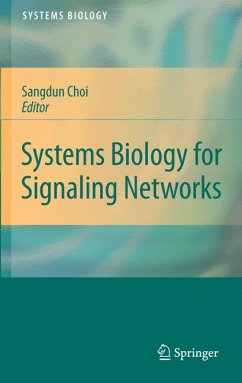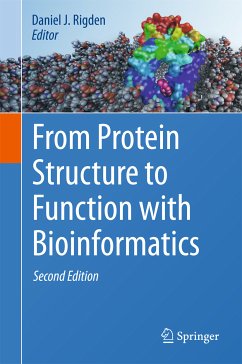
Systems Biology for Signaling Networks (eBook, PDF)
Versandkostenfrei!
Sofort per Download lieferbar
167,95 €
inkl. MwSt.
Weitere Ausgaben:

PAYBACK Punkte
84 °P sammeln!
System Biology encompasses the knowledge from diverse fields such as Molecular Biology, Immunology, Genetics, Computational Biology, Mathematical Biology, etc. not only to address key questions that are not answerable by individual fields alone, but also to help in our understanding of the complexities of biological systems. Whole genome expression studies have provided us the means of studying the expression of thousands of genes under a particular condition and this technique had been widely used to find out the role of key macromolecules that are involved in biological signaling pathways. H...
System Biology encompasses the knowledge from diverse fields such as Molecular Biology, Immunology, Genetics, Computational Biology, Mathematical Biology, etc. not only to address key questions that are not answerable by individual fields alone, but also to help in our understanding of the complexities of biological systems. Whole genome expression studies have provided us the means of studying the expression of thousands of genes under a particular condition and this technique had been widely used to find out the role of key macromolecules that are involved in biological signaling pathways. However, making sense of the underlying complexity is only possible if we interconnect various signaling pathways into human and computer readable network maps. These maps can then be used to classify and study individual components involved in a particular phenomenon. Apart from transcriptomics, several individual gene studies have resulted in adding to our knowledge of key components that are involved in a signaling pathway. It therefore becomes imperative to take into account of these studies also, while constructing our network maps to highlight the interconnectedness of the entire signaling pathways and the role of that particular individual protein in the pathway. This collection of articles will contain a collection of pioneering work done by scientists working in regulatory signaling networks and the use of large scale gene expression and omics data. The distinctive features of this book would be: Act a single source of information to understand the various components of different signaling network (roadmap of biochemical pathways, the nature of a molecule of interest in a particular pathway, etc.), Serve as a platform to highlight the key findings in this highly volatile and evolving field, and Provide answers to various techniques both related to microarray and cell signaling to the readers.
Dieser Download kann aus rechtlichen Gründen nur mit Rechnungsadresse in A, B, BG, CY, CZ, D, DK, EW, E, FIN, F, GR, HR, H, IRL, I, LT, L, LR, M, NL, PL, P, R, S, SLO, SK ausgeliefert werden.













